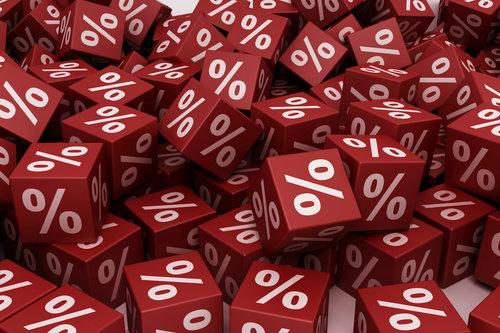After the latest press conference involving Federal Reserve Chair Janet Yellen and talk of interest rates, Yellen remained on the quiet side. Is that a good or bad sign for interest rates?
Federal Reserve policymakers reiterated their expectation this week that they would keep interest rates low for a “considerable time” after they end the Fed’s large-scale asset purchase plan (a.k.a. “quantitative easing”), most likely after their next meeting in October. That’s not what inflation hawks and many pundits hoped to hear, but it’s the right thing to do in light of ongoing labor market weakness and no hint of unacceptable inflation on the horizon.
After the Fed again stated their expectations, Yellen cautioned that the Fed’s commitment to keep interest rates near zero for a “considerable time” could change if U.S. economic performance continues to exceed expectations, according to Bloomberg News.
“The risk is that the Fed ultimately does tighten policy in the way that it’s expecting and is communicating, and markets have to adjust up very quickly in a disorderly way,” Laura Rosner, a U.S. economist at BNP Paribas SA in New York and a former New York Fed researcher, told Bloomberg News.
To summarize, here is what we’re seeing now:
•A still-recovering economy typically does not generate excessive inflation in either wages or prices, and the U.S. is not seeing either now. As part of its dual mandate to pursue both maximum employment and stable prices, the Fed has a target of 2 percent inflation.
•The widely followed consumer price index rose 1.7 percent over the last 12 months. The Fed focuses on a different measure of consumer prices that has been running somewhat lower. To fight future recessions, the inflation target arguably should be higher but, either way, the Fed would view sustained deviations from it in either direction as compromising its inflation goal.
•While the economy has improved substantially since the depths of the recession and the Fed is now talking about ending the unconventional measures and “normalizing” its operations, it still must balance the benefits from reducing the real costs to the economy of excess unemployment and underemployment against the possible risks of keeping interest rates too low, too long. Fed policymakers made the right call this week in deciding to continue supporting the labor market recovery.
What does that mean for interest rates? They are undoubtedly going to increase, but the questions are when and by how much? Freddie Mac expects the average interest rate for a 30-year fixed mortgage to reach 5 percent by the end of 2015. The Mortgage Bankers Association also expects to see 5 percent averages by the end of next year, and Lawrence Yun, chief economist for the National Association of Realtors, says the 30-year fixed rate will average 5.5 percent in 2015.
To stay current with what’s happening with interest rates, make sure you stay in contact with your preferred lender, or check Freddie Mac’s weekly report, out every Thursday: freddiemac.mwnewsroom.com/news.
